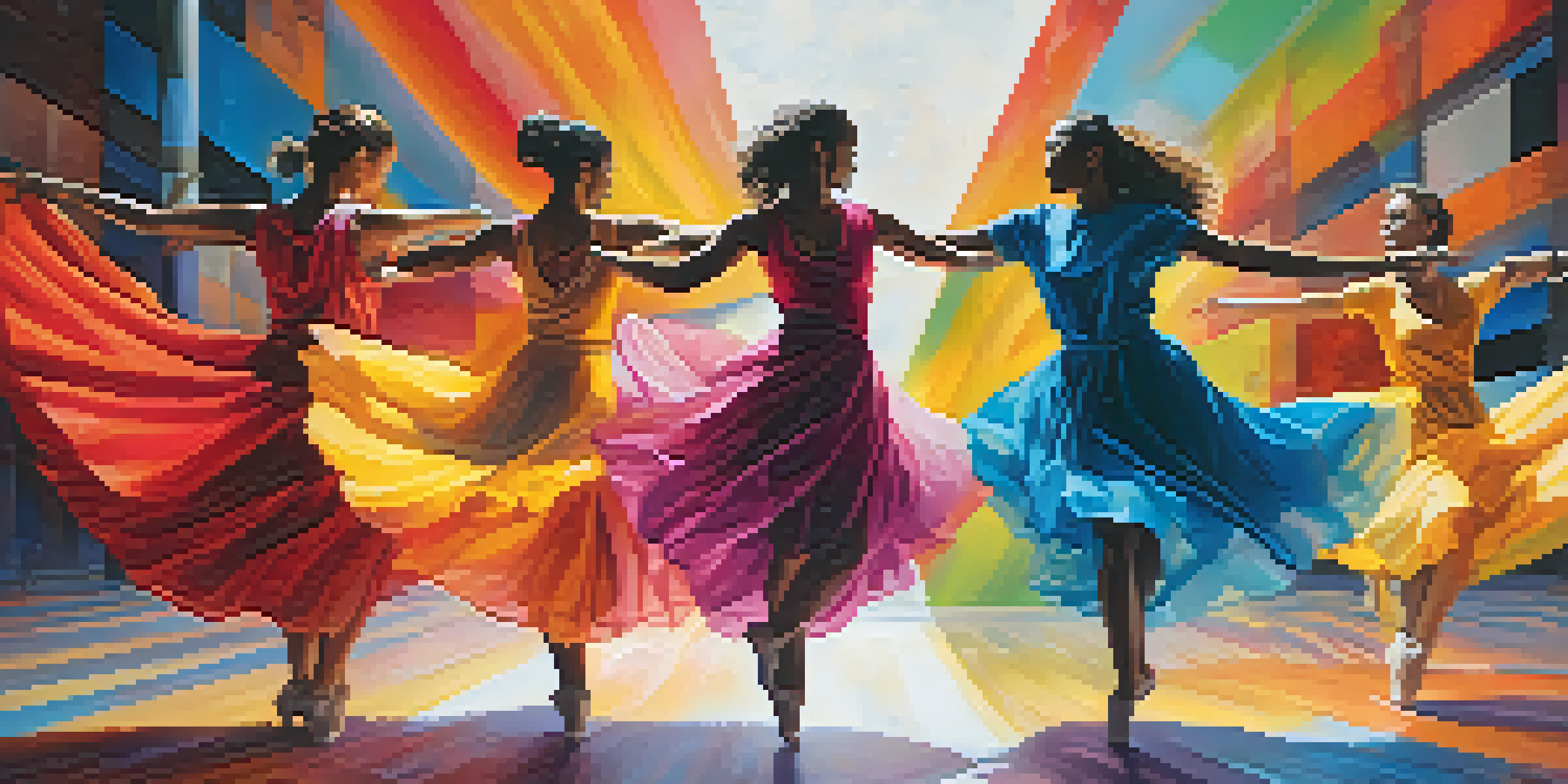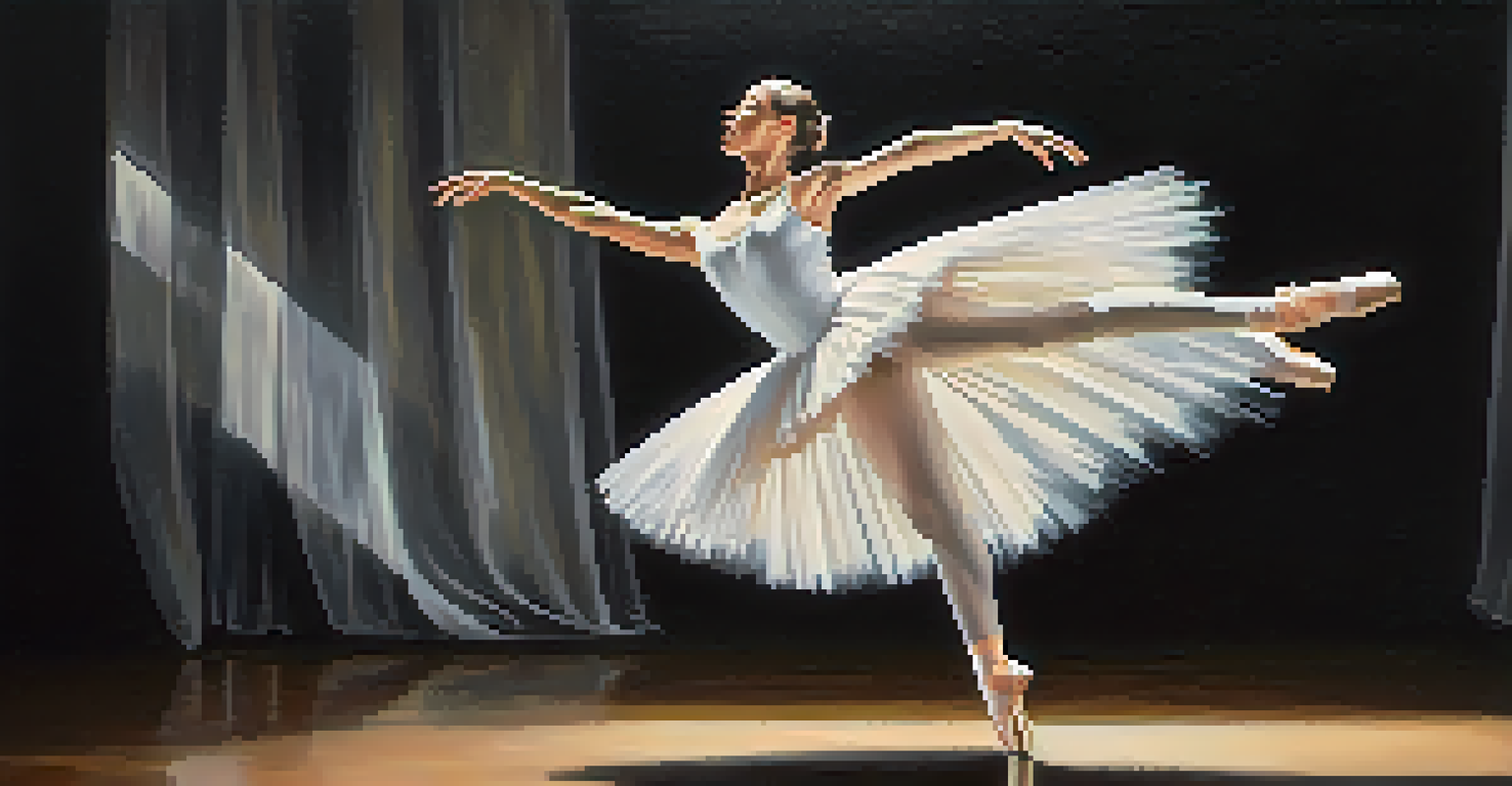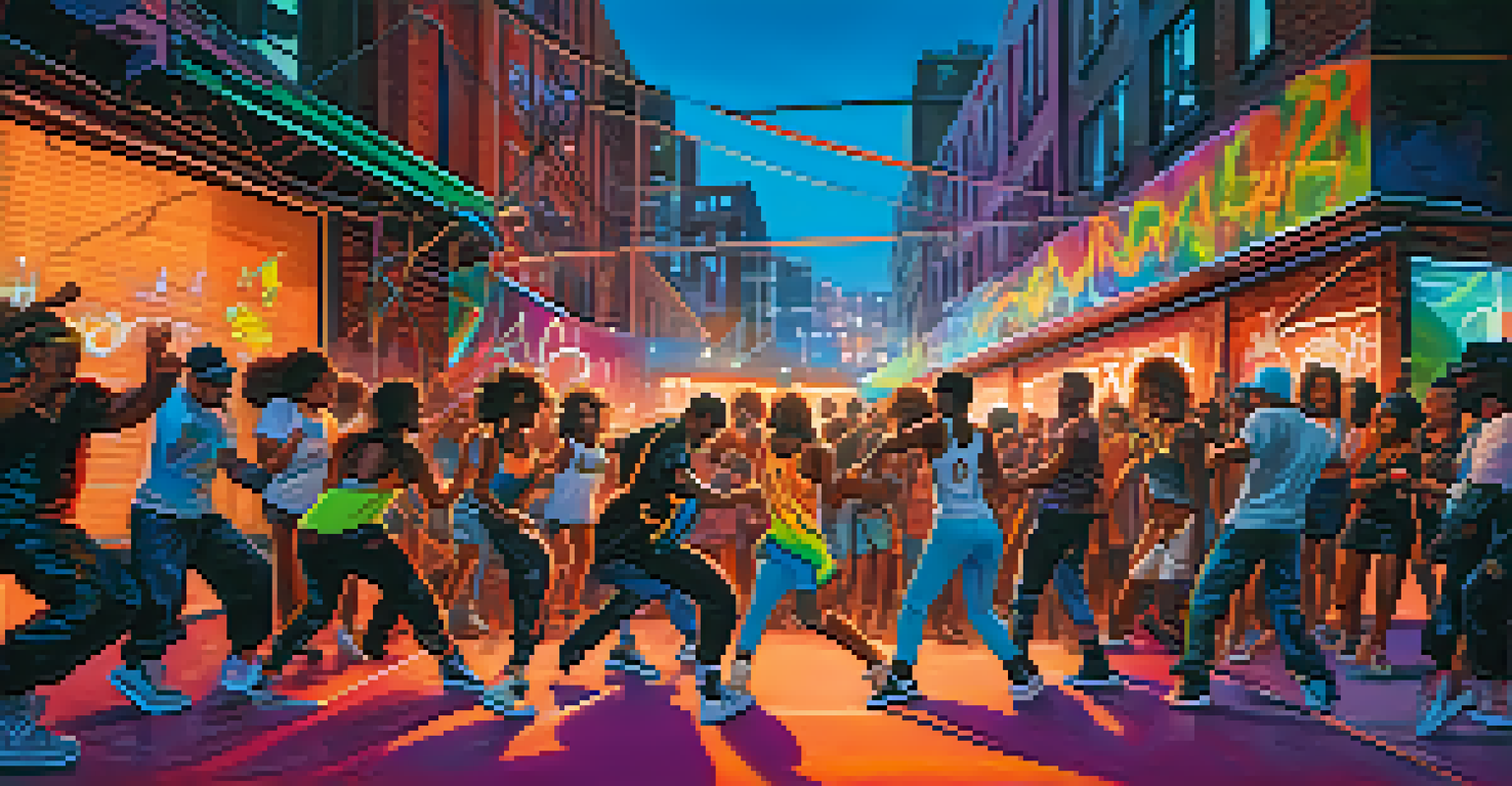Historic Dance Forms and Their Impact on Gender Norms

The Origins of Dance and Gender Expression
Dance has been a form of expression since ancient times, often reflecting the social and cultural dynamics of the era. In many societies, dance was not just a pastime but a vital way to convey stories, emotions, and traditions. Gender roles were often mirrored in these dance forms, with certain styles becoming synonymous with masculinity or femininity.
Dance is the hidden language of the soul.
For instance, traditional dances in various cultures often see men taking on strong, powerful roles while women display grace and delicacy. This division can be traced back to historical contexts where physicality was associated with masculinity, while emotional expression was linked to femininity. These early associations laid the groundwork for the gender norms we see in dance today.
However, as society evolved, so did the interpretations of these dances. The meanings attached to different movements began to shift, allowing for a broader range of gender expressions within the dance community. This evolution demonstrates how dance can serve as a reflection of societal changes and attitudes towards gender.
Ballet: A Study in Gender Dynamics
Ballet, often seen as the epitome of grace and elegance, has a rich history intertwined with strict gender roles. Traditionally, male dancers were seen as the strong leads, while female dancers were often relegated to roles that emphasized their fragility. This clear division not only influenced how the dances were performed but also how audiences perceived gender capabilities.

However, over the years, many female ballerinas have challenged these norms, proving their strength and versatility through athletic and powerful performances. The rise of choreographers like Martha Graham and the incorporation of contemporary techniques have allowed women to break free from the confines of traditional ballet. As a result, ballet has slowly become a platform for questioning and redefining femininity and strength.
Dance Reflects Gender Evolution
Throughout history, dance has mirrored societal changes in gender roles, evolving from rigid norms to more inclusive expressions.
This shift in ballet mirrors broader societal changes, as women increasingly take on roles that were once dominated by men. Today, we are witnessing a blend of styles that encourages a more fluid interpretation of gender in dance, breaking down the barriers that have historically separated male and female roles.
Folk Dance: Gender Roles in Cultural Heritage
Folk dance serves as a window into the cultural traditions and gender roles of various communities. In many cultures, folk dance is a communal activity where gender roles are often emphasized through specific movements and styles. For instance, in traditional Irish dance, men and women often perform in distinct ways, showcasing their respective roles in society.
The body says what words cannot.
However, folk dance also allows for a unique exploration of gender dynamics. In some instances, men and women may switch roles or dance together in ways that challenge traditional expectations. This blending not only fosters a sense of community but also encourages participants to question and redefine their own identities.
As folk dances evolve, they increasingly reflect modern values and perspectives on gender. Contemporary folk dance groups often strive to create inclusive environments where all forms of expression are celebrated, challenging outdated norms and promoting equality.
Hip-Hop Dance: A Modern Challenge to Gender Norms
Emerging from urban culture, hip-hop dance has become a powerful medium for self-expression and rebellion against traditional gender norms. Unlike many historical dance forms, hip-hop encourages individuals to embrace their own style and identity, regardless of gender. This inclusivity has allowed for a diverse range of voices and bodies to take center stage.
In hip-hop, both men and women often perform moves that defy the conventional expectations of their gender, showcasing strength, agility, and creativity. Female dancers, for example, have made significant strides in gaining recognition and respect within the hip-hop community, often pushing the boundaries of what is considered acceptable for women in dance.
Ballet Challenges Gender Norms
Ballet has transitioned from strict gender roles to a platform where female dancers showcase strength and redefine femininity.
The rise of female hip-hop artists and dancers has further empowered this movement, challenging stereotypes and encouraging a shift in societal attitudes towards gender roles. Through hip-hop, dancers are not just participating in a dance form; they are actively reshaping the narrative around gender and expression.
The Role of Dance in LGBTQ+ Representation
Dance has historically provided a space for LGBTQ+ individuals to express their identities and challenge societal norms. Many dance forms, particularly in the 20th century, became a sanctuary for those seeking to explore gender fluidity and sexuality. The vibrant world of dance allowed for a celebration of diversity, often becoming a platform for political and social commentary.
For instance, drag performances, deeply rooted in dance, serve as a powerful form of expression within the LGBTQ+ community. Through the art of performance, drag artists challenge traditional gender binaries and invite audiences to reconsider their understanding of gender and identity. This blurring of lines is not just entertaining; it is a potent form of activism.
As dance continues to evolve, the visibility and representation of LGBTQ+ identities have become increasingly prominent. This inclusive approach not only enriches the dance community but also fosters a broader dialogue about gender and sexuality in society.
Contemporary Dance: Breaking Boundaries
Contemporary dance embraces a wide range of styles and influences, often blurring the lines between genres and challenging traditional gender norms. Choreographers today are increasingly focused on exploring themes of identity, race, and gender, using dance as a medium for social change. This shift reflects a growing recognition of the need for inclusivity and representation in the arts.
In contemporary dance, movement is often used to express emotions and narratives that resonate with personal experiences. This has led to a more fluid interpretation of gender, where dancers are encouraged to explore their individuality rather than conform to prescribed roles. The result is a vibrant tapestry of performances that reflect the complexities of modern identities.
Hip-Hop Promotes Gender Inclusivity
Hip-hop dance champions self-expression and challenges traditional gender expectations, empowering diverse identities within the community.
As audiences engage with contemporary dance, they are invited to consider their own perceptions of gender and the roles we play in society. This dance form not only entertains but also challenges viewers to reflect on their understanding of gender norms and the potential for change.
The Future of Dance and Gender Norms
As we look to the future, the relationship between dance and gender norms continues to evolve. With each new generation of dancers and choreographers, there is a growing emphasis on inclusivity and diversity. This shift is not just about representation; it’s about redefining what it means to express oneself through movement.
Dance education programs are increasingly incorporating discussions about gender and identity, encouraging young dancers to explore their own narratives. This proactive approach allows for a new wave of creativity that embraces fluidity and challenges traditional norms. By fostering an environment where all voices are heard, the dance community is paving the way for a more inclusive future.

The impact of these changes will extend beyond the dance floor, influencing broader societal perceptions of gender. As dance continues to serve as a platform for expression, it has the power to inspire change, encourage conversations, and ultimately reshape our understanding of gender norms in society.